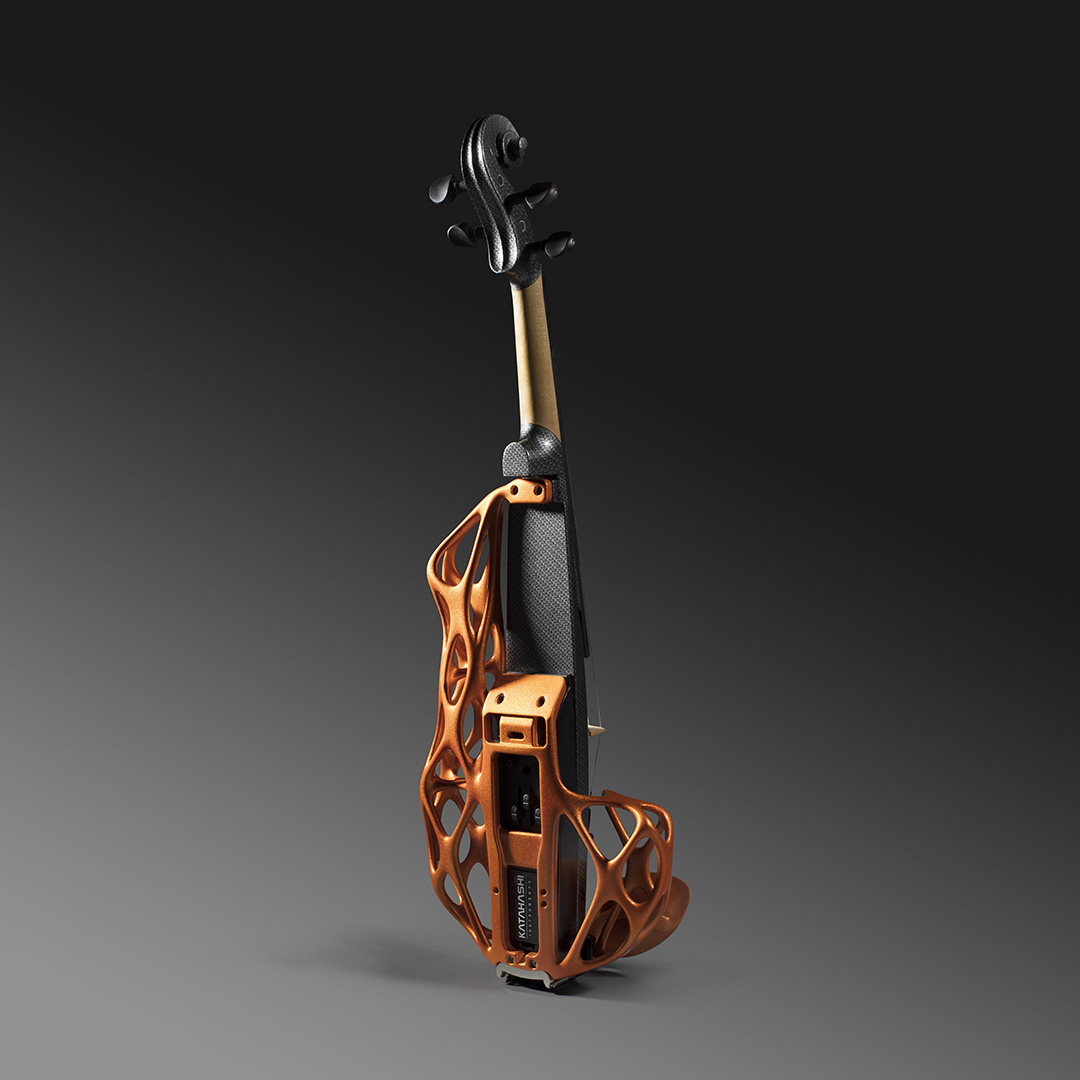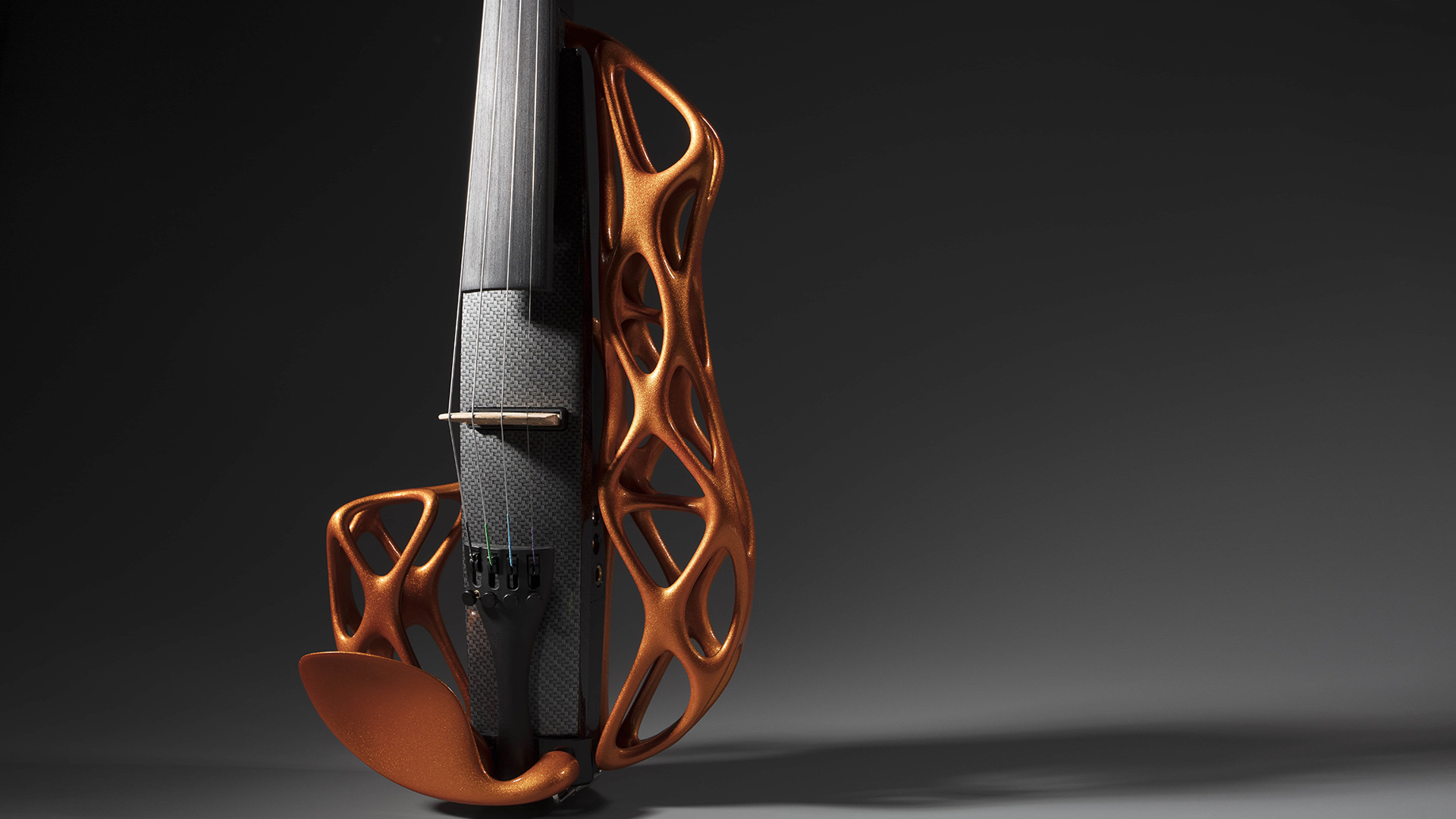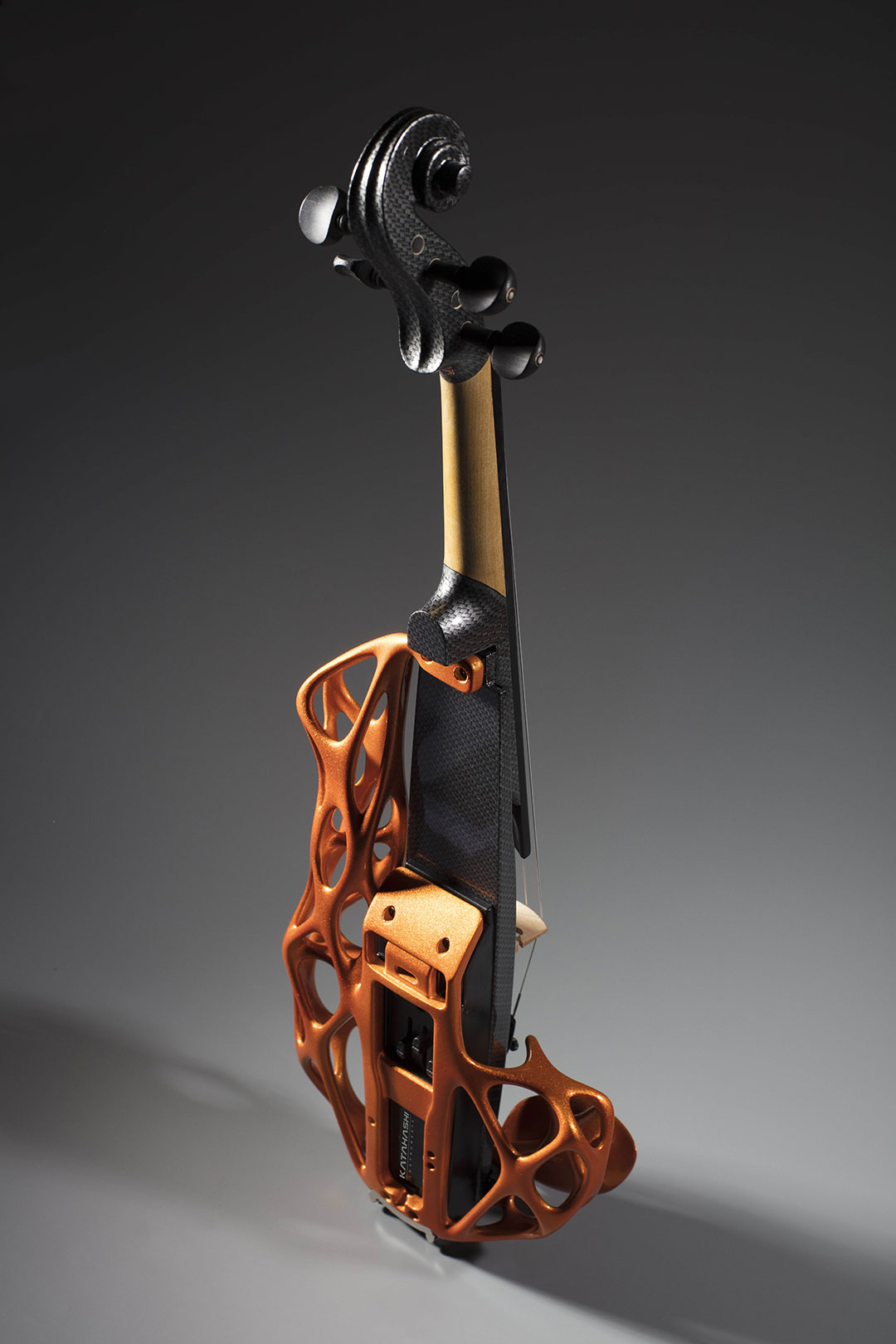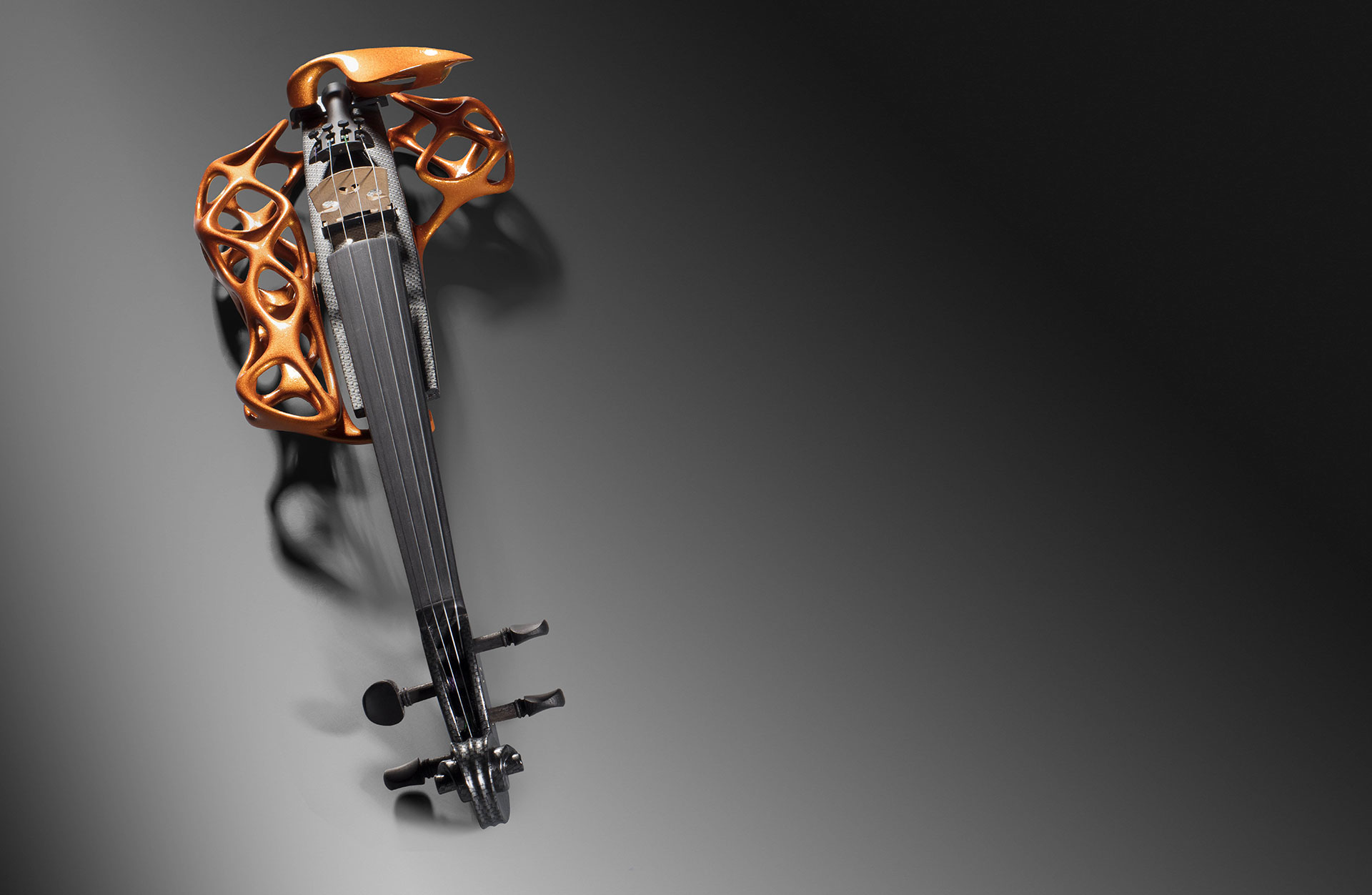Katahashi Instruments unleashes an all-electric violin, descended from a bloodline of traditional Japanese musical instruments and bred to embark on the futuristic journey. Meet Karen, a bold skeletal violin set to disrupt the music industry to the bone. Abandoning the conventional wooden acoustic chambers, with its sleek futuristic frame, Karen Ultralight is an electric violin that commands a second look. Barcelona-based product design and development agency Anima Design actualised this innovative music technology for Japanese violin makers Katahashi Instruments. Using computational design systems, Karen Ultralight's ultralight structure is calculated at an exemplary ergonomic and acoustic level. “This project was a challenge because we haven’t made any sketches and we design directly with mathematical formulas crossing data from weight, ergonomics and we were defining shapes on the screen in real time,” says Diego Quiroga, product designer and CEO of Anima Design.
Behind The Curtains
Its futuristic silhouette is achieved by 3D-printing the generative design out of polyamide, which conforms to the innovative process of its creation. Alfredo Gallozzi, professor of computational design at the UPC University of Barcelona, defines computational design as a design methodology based on algorithms. The programs used involve designers defining the entire process by which an object is created in lieu of specifying fixed forms, consequently generating the layout derived from the set of instructions, variables, and parameters. “This process offers us a large number of options and alternatives, where there are no limitations on the creativity of the designer,” says Gallozzi. “Instead, this is in contrast to designing an object in a traditional drawing/modelling tool, where we are limited to what the software offers us,” he adds. The organic and skeletal, relatively hollow frame, an outcome of generative design, mirrors natural growth algorithms, establishing an equilibrium between functionality and economy alongside a rigidity sans the inessential material and mass.

Striking The Right Chord
Due to ever-increasing innovation and modern manufacturing techniques in music design, intricate designs that were once seemingly unattainable are now becoming a reality, such as Karen's organic silhouette. The juxtaposition of Diego Quiroga’s experience in product design and the wide computational design know-how of Alfredo Gallozzi led to this striking concoction of modern aesthetics, functionality and lightness. The captivating aesthetic is the culmination of a thorough analysis of light, ergonomic design and application of high-tech materials.
Artistic Ensemble
Karen Ultralight exhibits a dynamic body, lightweight and made with 100% recyclable polymers, composed of natural wood and finished in carbon fibre for an optimum sound design and sono-acoustic response while the frame is a mathematical structure meticulously calculated for its purpose. The 3D printed generative frame is safely ensconced on a carbon fibre body, with a birchwood fingerboard for an enhanced experience that rings a bell. Working like any average electric guitar, the Karen Ultralight has a 1/4-inch jack output, an internal 9V battery, an active pickup system and a headphone jack for you to silently play music directly into your headphones and effortlessly dodge complaints from your neighbours.

Katahashi Instruments builds on the legacy of the earliest makers of violins in Japan, Sadajiro Matunaga and Masakichi Suzuki. Both were trained as shamisen makers and began making violins based on instruments brought to Japan toward the end of the 19th century from Western sources, using Japanese pine, maple and sometimes sycamore. Putting modern manufacturing methods into practice, their newest instrument in collaboration with Anima Design’s jaw-dropping design evolution, is another stride towards producing electrified and modernised tools, giving new talent the ideal ergonomics to forge ahead.






 Sign in with email
Sign in with email
















What do you think?